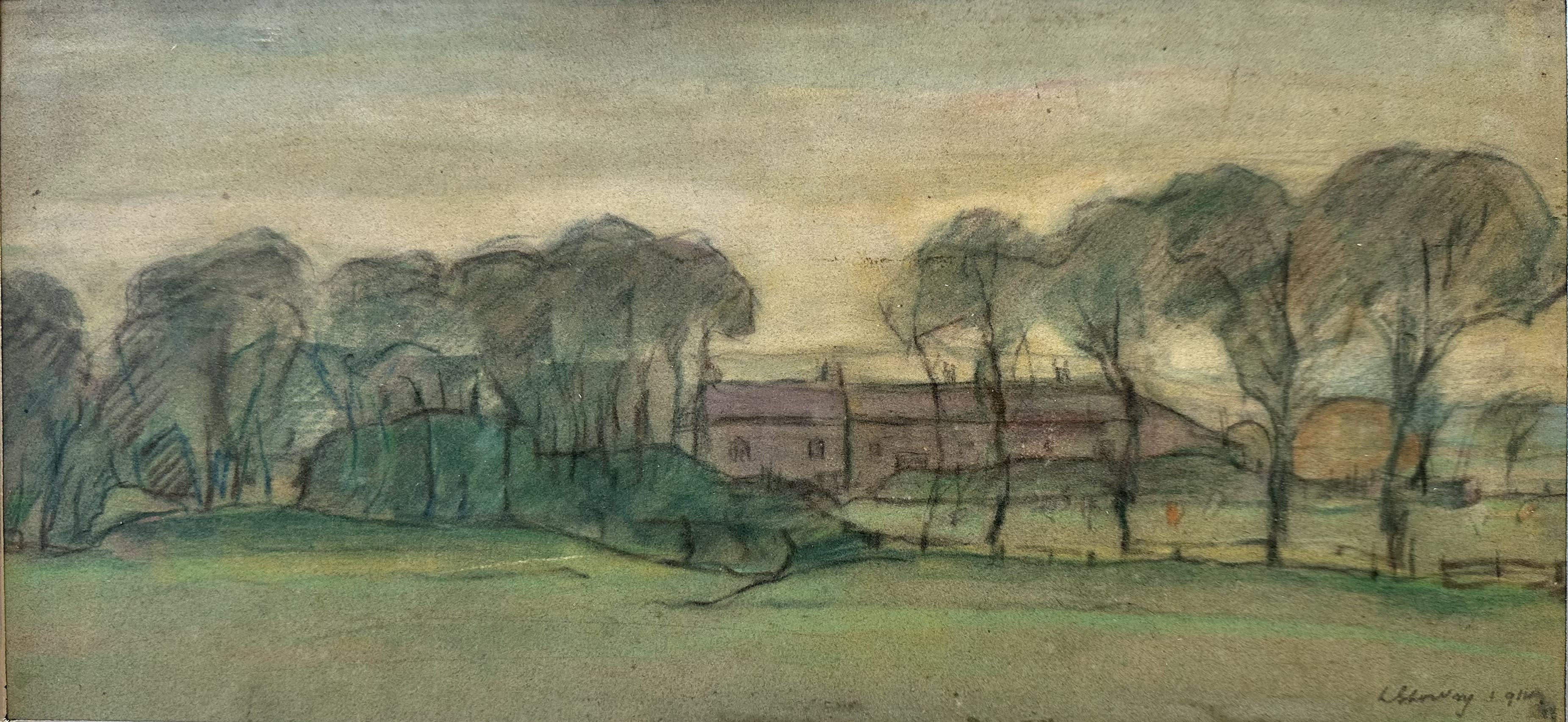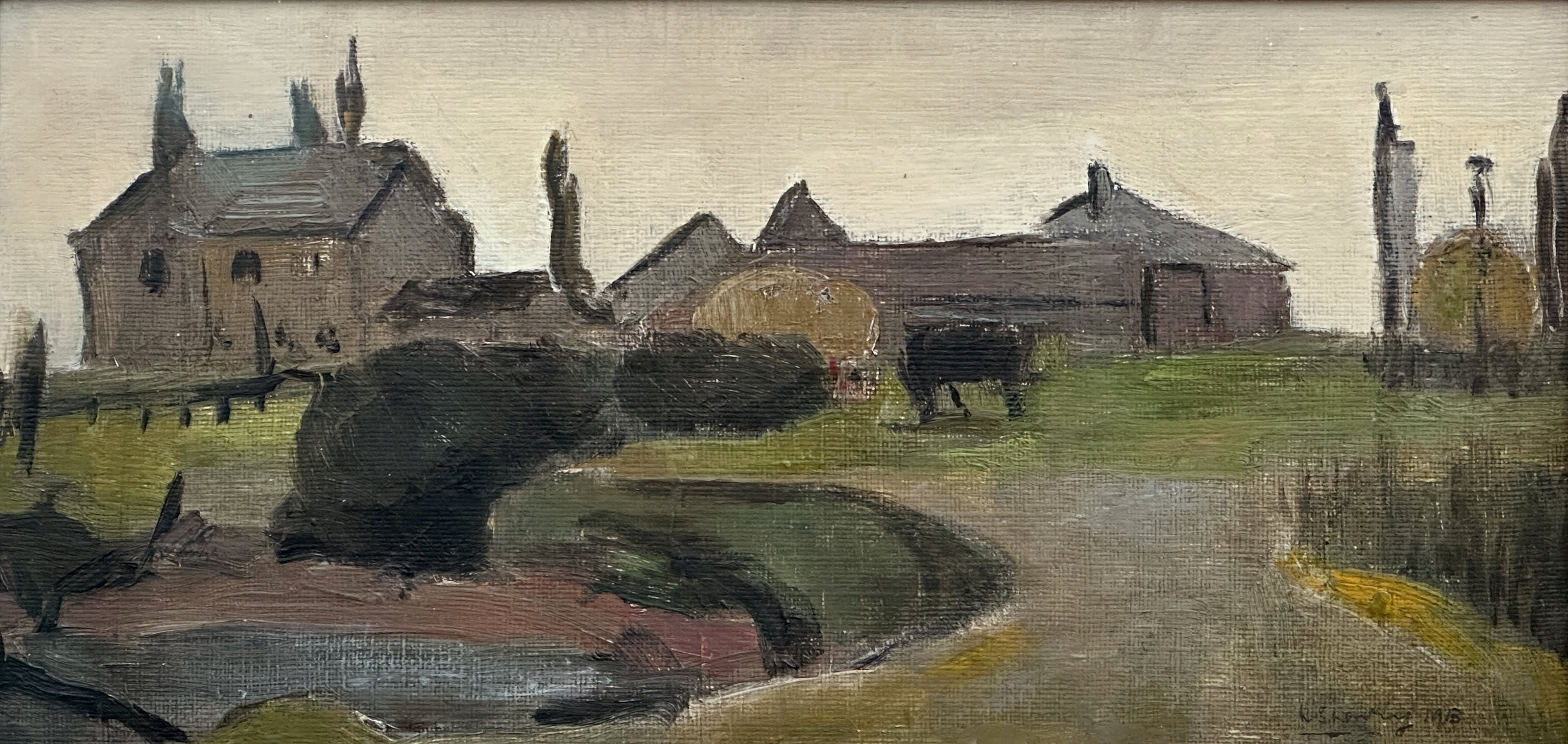Through his unique perspective, L.S. Lowry invites us to see the beauty in the everyday and the profound in the ordinary. He is one of Britain’s most iconic artists, celebrated for his distinct depictions of industrial landscapes and their human stories. Renowned for his matchstick men paintings and starkly minimalistic style, his work captures the soul of an era shaped by urban transformation.
Here, we look at Lowry’s artistic journey, exploring the influences that defined his vision and Lowry’s legacy that secured his place in the history of British art.
The Early Life of L.S. Lowry

Born in 1887, in Old Trafford Manchester, L.S. Lowry’s life story begins amidst the transformation of Britain during the Industrial Revolution. His family belonged to the middle class, with his father working as an estate agent and his mother as a talented pianist who aspired to a life of social refinement. The stark contrasts of his environment—between the smoke-filled factories and the quiet aspirations of his household—formed the backdrop of his childhood.
How Childhood Influenced His Artistic Vision
Lowry displayed a keen interest in art from an early age, often sketching scenes that reflected his fascination with the world around him. A change in his family’s circumstances and a house move, meant Lowry encountered different surroundings and he became captivated by the rhythm of urban life—the crowded mills, the chimneys belching smoke, and the figures moving through these stark settings.
These scenes became central to his artistic identity, inspiring works highlighting the resilience and struggles of the working class. His ability was to find beauty in the gritty realities of an ever evolving working Britain.
Lowry’s Education and Artistic Training
His formal artistic journey began at the Salford School of Art and the Manchester School of Art, where he developed his technical skills and distinctive approach to painting. His studies under Adolphe Valette, a French Impressionist painter, significantly influenced his early techniques and understanding of light and composition.
While Valette introduced him to Impressionism, Lowry gravitated towards a style that captured the starkness of industrial life rather than its fleeting beauty. During his education he experimented with various techniques, refining the minimalistic yet evocative approach that would define his career.
The Role of His Mother in His Life and Work

Lowry’s relationship with his mother deeply shaped his personal life and artistic journey. Following the death of his father, Lowry became her primary caregiver, devoting much of his time to attending to her needs during her prolonged illness.
This relationship, marked by emotional dependency and isolation, influenced his artistic perspective. Themes of loneliness and introspection often surfaced in his work, reflecting the challenges of his home life. His mother's high standards and scathing nature also shaped Lowry’s drive to succeed, even as her disapproval of his artistic ambitions cast a shadow over his accomplishments.
His Career as a Rent Collector
After being made redundant in 1910 from his claims clerk post with General Accident Manchester, Lowry applied for and accepted a few months later a post as rent collector with Pall Mall Property Company. It took a short time for Lowry to realise this was in reality a most advantageous change. He was no longer confined to a week sat behind his desk and his hours he spent out of the office were never questioned, also it was never mentioned if even noted, that his tasks took a good while longer than they should. This was due to Lowry more often than not, using the office notepaper to draw portraits and little sketches of places or people that caught his eye. Lowry balanced his rent collecting by day with painting in the evenings, his day job was kept as a secret and those who knew Lowry the painter never knew that he held a different job by day. Lowry stayed with the company until he retired in 1952 aged 65.
Exploring Lowry’s Breakthrough as an Artist
His artistic breakthrough came during the mid-20th century, as exhibitions of his work began to gain recognition. His inclusion in the 1939 Royal Academy Summer Exhibition was a pivotal moment when his distinctive landscapes captured widespread attention. His ability to portray the nuances of working-class life in his art set him apart from his contemporaries, garnering both critical and public acclaim.
Over time, exhibitions across Britain showcased his work, solidifying his reputation as a leading figure in British art. The simplicity and authenticity of his style resonated deeply, marking the start of his rise to prominence.
The Evolution of His Signature Style

Lowry’s signature style, characterised by his “matchstick men” and industrial landscapes, emerged over years of experimentation and observation. He transitioned from traditional landscapes to scenes dominated by mills, factories, and crowded streets, capturing the essence of industrial Britain. His use of muted colours and stark contrasts reflected the sombre realities of urban life, while his minimalist figures conveyed a surprising depth of movement and emotion.
Challenges and Criticisms Faced by Lowry
Lowry encountered significant challenges throughout his career when trying to gain acceptance within the traditional art world. Critics often dismissed his work as simplistic or amateur, with some labelling his “matchstick men” as overly naive. His 1949 painting ‘The Cripples’ faced criticism for its portrayal of disabled individuals, viewed by some as neglectful and others as dehumanising.
Despite these opinions, he remained steadfast, refining his craft and continuing to depict the industrial scenes that defined his vision. He faced rejection from prestigious art institutions early in his career, but his resilience and dedication eventually earned him recognition. Lowry’s ability to turn criticism into motivation underscored his commitment to representing the realities of industrial Britain with authenticity and honesty.
Lowry’s Later Years and Personal Reflections
In his later years, he preferred solitude to the social circles of artistic fame. Despite his success, he was known for his humility and reluctance to embrace the limelight. He reflected on his career with a sense of quiet pride, acknowledging the emotional weight and personal struggles that shaped his work.
Even in his final years, he maintained his passion for painting, often revisiting themes of isolation and industrial life. Letters and interviews from this period provide a window into his reflective nature and enduring commitment to his craft.
The Enduring Legacy of L.S. Lowry
Today, L.S. Lowry’s work is celebrated as an iconic representation of British industrial life, with his paintings displayed in major museums and private collections worldwide. His unique ability to capture the spirit of a transforming society has left an indelible mark on the art world. Works such as "Coming from the Mill" and "Going to Work" are examples of his skill in capturing everyday life. Lowry’s influence extends beyond his era, inspiring contemporary artists who draw on his themes of urbanisation and humanity. His portrayal of industrial Britain remains a poignant reminder of the resilience and character of the communities he depicted, ensuring his relevance to generations of art enthusiasts and collectors alike.
Through his distinctive style and dedication, he shaped a unique artistic legacy that continues to resonate with audiences today. Please do not hesitate to Contact us if you wish to find out more about Lowry and his work.
